
July 26, 2011
The Work of Art in the Age of Googled Reproduction

Mona Lisa, per Google
A few months back, I had an email exchange with a Web/technology expert for whom I have great respect, and who made an interesting point about works of art in the age of Google. (The exchange was a sidetrack to an off-the-record discussion of a different subject, and he may be appalled by what I’m about to do with his wise insight … so I’ll leave his name out of it for now.*)
Basically we were discussing the Web, memory, and what sort of record current technology would one day leave behind, and he sent me a link to the Google Image Search results for “Mona Lisa.” See above: This results in a pastiche of remixes and references. “There are all these mashups of the painting,” he wrote, “but where’s the original?” It’s there of course, but I see his point.
That said, the truth is that whatever this may or may not suggest about art and the age of digital reproduction, I found the actual Google Image results page kind of fantastic: Some algorithm picking the elements; some other string of code arranging the results in tidy rows, each image somehow commenting on what’s next to it, above it, below it. Time went by, but I kept thinking about this and finally I decided to do a few cold searches for iconic imagery, to see what came up.
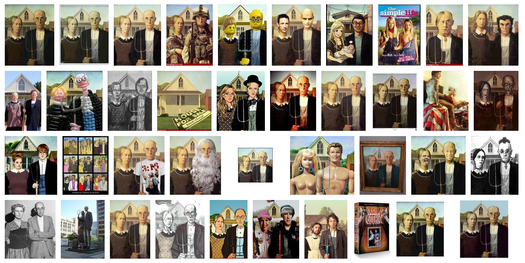 American Gothic, per Google
American Gothic, per Google
Normally I use Firefox, but for this little experiment I searched using Safari, on the theory that because I don’t often use Safari there would be less me-specific Google data skewing the searches. Then I used the “Grab” utility that as far as I can tell is part of the standard software on my MacBook Pro. I custom-captured the first full page of Google-provided images; I converted to those to JPEGs, and you’re looking at the results.
Some time after the original email conversation that put this line of thought in my head, I was talking to a designer who kept referring to “image economies,” or some similar phrase. When I asked him what that meant, he basically said: What you get back when you search for a term in Google Image.
 Tomato Soup Can, per Google
Tomato Soup Can, per Google
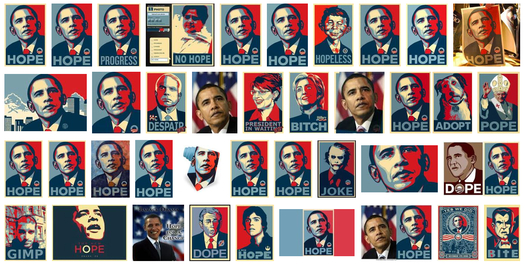 Obama Hope, per Google
Obama Hope, per Google
But I don’t want to call these digital objects “image economies,” I want to call them something like Google Clusters. Or maybe Pergoogles: These are iconic images — per Google.
Even that is a bit of a cheat, because obviously Google is responding to the specific words I choose. (The title of each image here corresponds with the search term I used; I didn’t use quote marks in my searches.) It’s easy to capture “Mona Lisa,” harder to see what Google makes of Warhol’s iconic soup can, or Michelangelo’s David (see below).
Nevertheless, I’m rather pleased with the results, all in all.
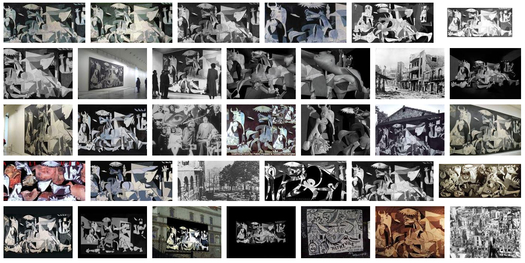 Guernica, per Google
Guernica, per Google
 Last Supper, per Google
Last Supper, per Google
I’d love to see all these printed crisply, and very large, and displayed in a high-ceilinged and white-walled gallery. Or museum. After all, I think a case could be made for these as “digital readymades,” a term whose origins I don’t know, but that I’ve read applied to the “Photoshop Gradient” pieces by Cory Arcangel. Those are supposedly one-click affairs, and the ones I’ve seen I quite like. (Though I’ve only seen them online.)
One question that might arise is: Who would be the owner, the artist, the author of these Pergoogles (or whatever they are)? They encompass original works, remix spinoffs, spoofs, maybe even unrelated keyword-driven imagery. Is it an involuntary collaboration among all of the above? Or is Google the artist, creating bricolage with its algorithm?

Whistler’s Mother, per Google
I’m going to say the author of the images that you are looking is me, on the theory that I typed the search terms. Admittedly, I didn’t do as much work as, say, the brilliant Kutiman must put into his musical/video YouTube assemblages, or as much as the makers of the Life In A Day documentary apparently put into their project. But I don’t think what I’ve “created” here is totally removed from those collage-like works. Plus, it did take me more than one click. And there’s actually a lot of work involved in pulling together and arranging all this material — it just happens that here the work was done by algorithms and code that I wasn’t involved in.
Probably my (unserious) gallery dream is a bit much, but I could at least make postcards. Or, with a few more images, a calendar. This set is just the start, of course. This method could also be applied to create per-Google portraits of celebrities, famous logos, news events, perhaps even abstract concepts.
To me the most interesting thing about nailing down permanent-ish versions of these image clusters is that (as my Web expert correspondent was trying to tell me all along) they are actually quite ephemeral. Your own Google Image Search results for these same terms could be different, according to your search history. Mine could be different in a week, according to traffic fluctiations online. In fact, if you click on the titles of these images, what you get will almost certainly vary from what you see here.
On some level, that may suggest an image crisis; but at the same time, it’s an image opportunity. The underyling source material may be quite durable, yet these composites are anything but. All the more reason to take a few seconds and capture them, just as they are, for me, right now.
* UPDATE: It was Dave Winer, who you may know, among other things, for his Scripting News site. (He’s signed off on being named prime instigator of this flight of fancy.)
 David, per Google
David, per Google
Observed
View all
Observed
By Rob Walker
Related Posts
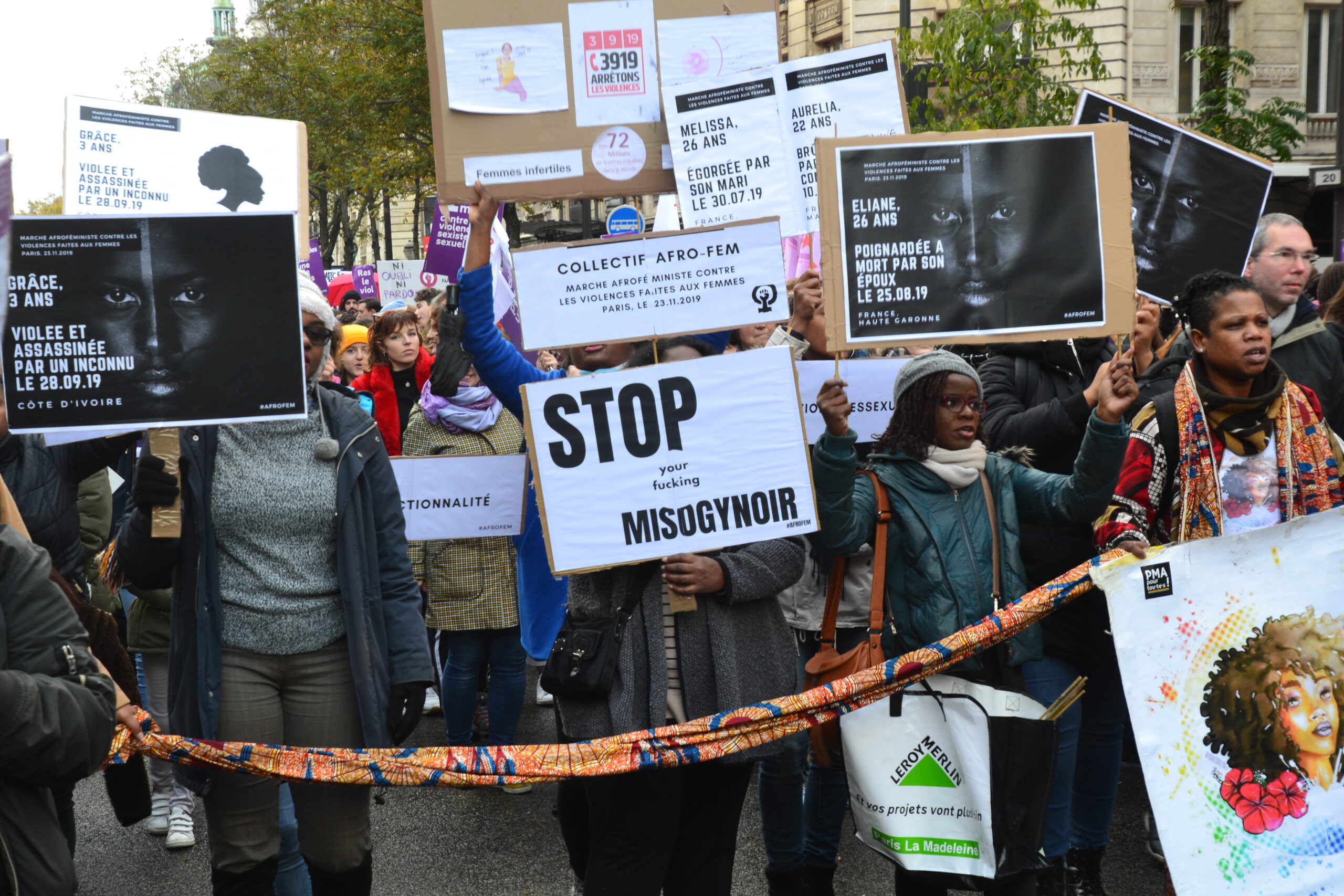
Equity Observer
L’Oreal Thompson Payton|Essays
‘Misogynoir is a distraction’: Moya Bailey on why Kamala Harris (or any U.S. president) is not going to save us
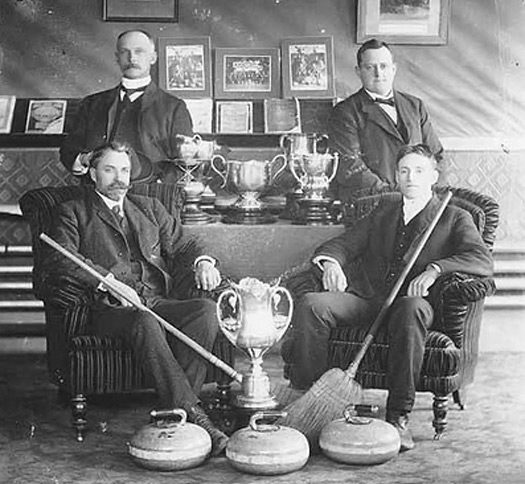
Equity Observer
Ellen McGirt|Essays
I’m looking for a dad in finance

She the People
Aimee Allison|Audio
She the People with Aimee Allison, a new podcast from Design Observer
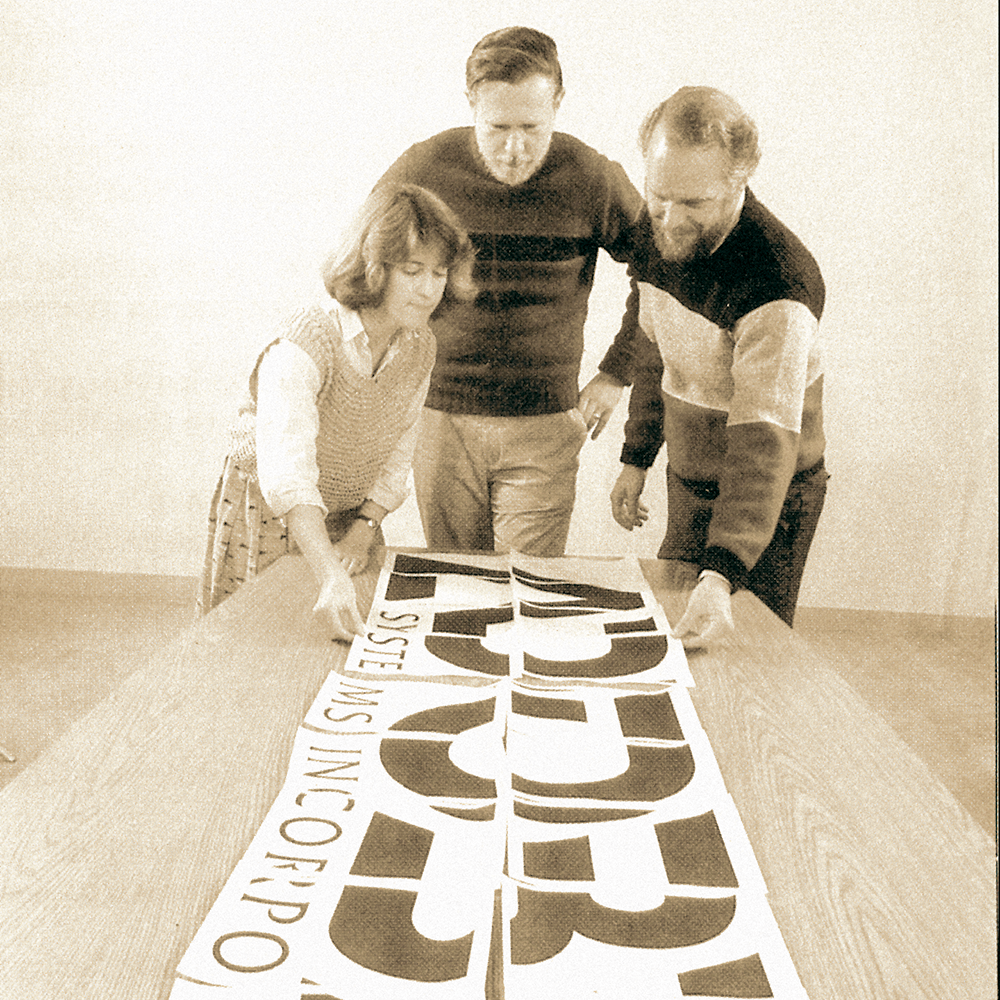
Equity Observer
Kevin Bethune|Essays
Oh My, AI
Recent Posts
Make a Plan to Vote ft. Genny Castillo, Danielle Atkinson of Mothering Justice Black balled and white walled: Interiority in Coralie Fargeat’s “The Substance”L’Oreal Thompson Payton|Essays
‘Misogynoir is a distraction’: Moya Bailey on why Kamala Harris (or any U.S. president) is not going to save us New kids on the bloc?Related Posts

Equity Observer
L’Oreal Thompson Payton|Essays
‘Misogynoir is a distraction’: Moya Bailey on why Kamala Harris (or any U.S. president) is not going to save us

Equity Observer
Ellen McGirt|Essays
I’m looking for a dad in finance

She the People
Aimee Allison|Audio
She the People with Aimee Allison, a new podcast from Design Observer

Equity Observer
Kevin Bethune|Essays

 Rob Walker is a technology/culture columnist for
Rob Walker is a technology/culture columnist for